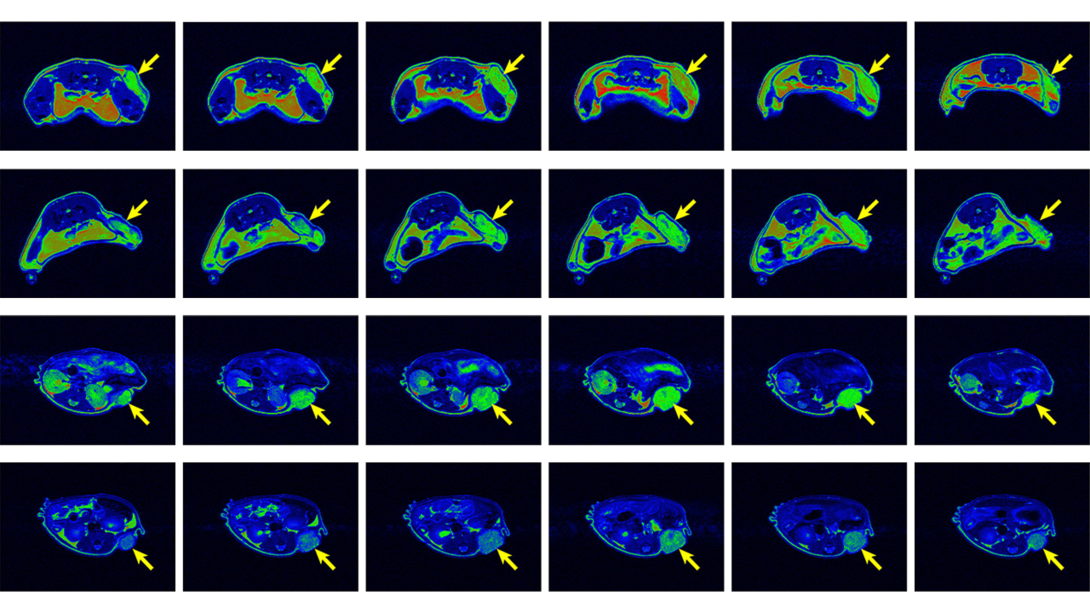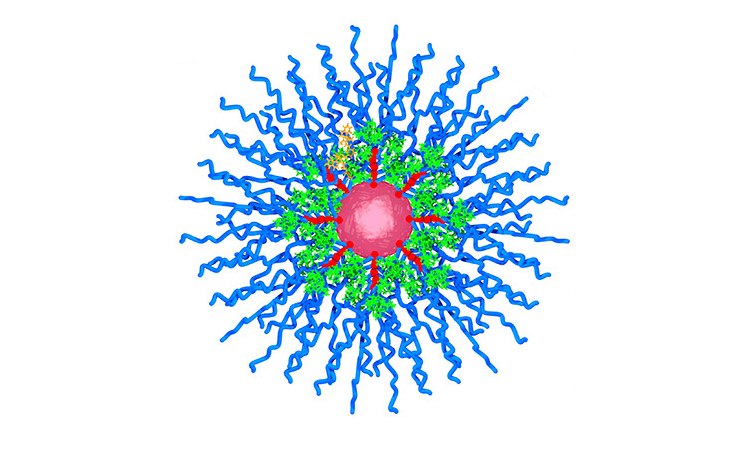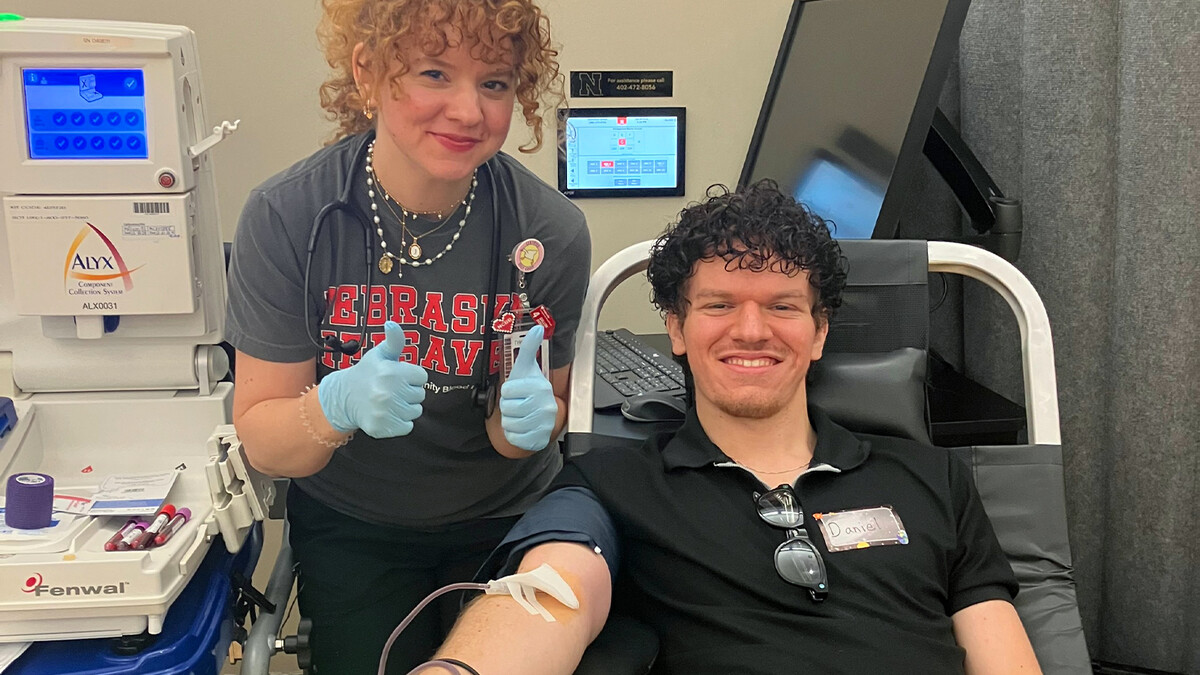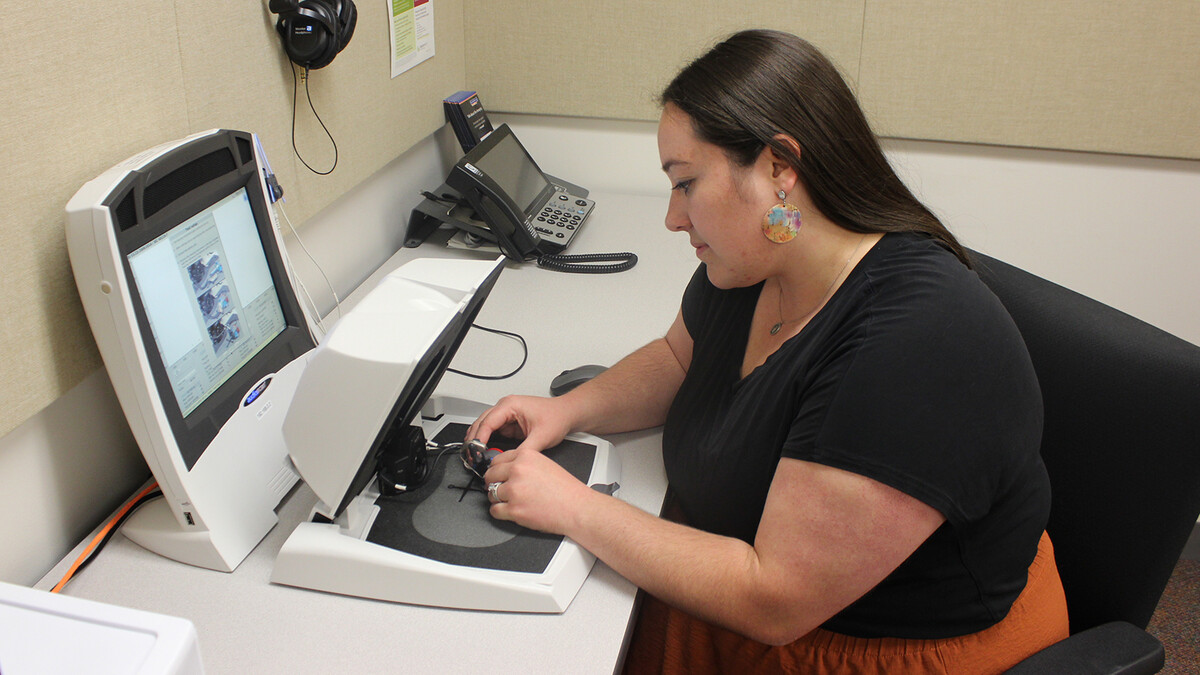
What do newborns and people with kidney problems have in common?
What might sound like the set-up to a joke actually has a clinical answer: Both groups can face health risks when injected with metal-containing agents sometimes needed to enhance the color contrast — and diagnostic value — of MRIs.
But a new metal-free nanoparticle developed by the University of Nebraska-Lincoln and MIT could help circumvent these health- and age-related barriers to the powerful diagnostic tool, which physicians use to investigate or confirm a broad range of medical issues.
The team’s nanoparticle contains a non-metallic molecule that enhances MRI contrast to help distinguish among bodily tissue, a task typically performed by contrast agents containing gadolinium or other metals.
It also survived long enough to congregate around tumors in mice, suggesting the nanoparticle could help detect cancers as well as its metallic counterparts while eliminating concerns about the long-term accumulation of metal in the body.
Contrast in styles
The molecules residing in the team’s nanoparticle belong to a family known as the nitroxides, which are among the most promising alternatives to the metallic agents often injected into patients prior to undergoing MRIs.
Yet antioxidants in the body typically begin breaking down nitroxides within minutes, limiting how long they can enhance the contrast of an MRI. And the team’s molecule of interest — a so-called organic radical — has just a single electron, a fact that normally inhibits how much contrast it can produce.
Gadolinium and other metals possess multiple electrons that help them influence how the magnetic waves produced by an MRI interact with water molecules in tissue. This magnetic influence, or relaxivity, ultimately dictates the strength of contrast signals that get converted into the familiar multicolored MRIs.

So Nebraska chemist Andrzej Rajca began collaborating with colleagues at MIT to design a metal-free nanoparticle that would exhibit stability and relaxivity comparable to gadolinium’s. Rajca previously designed a nitroxide that, when embedded within relatively small nanoparticles, displayed a relaxivity several times greater than its predecessors.
This time around, MIT researchers incorporated Rajca’s nitroxide into a large nanoparticle known as a brush-arm star polymer. The process involved assembling polymers into a spherical structure with a water-attracting core and water-repelling shell, then squeezing multitudes of nitroxide molecules between that core and shell.
The team found that packing so many nitroxides into such tight quarters effectively multiplied their individual relaxivity values, resulting in a nanoparticle with a relaxivity about 40 times higher than a typical nitroxide.

“You don’t need much of the (new) contrast agent to see a good image,” said Rajca, Charles Bessey Professor of chemistry.
The nanoparticle’s polymer shell also helped slow the advance of the disruptive antioxidants enough to prolong the nitroxides’ lifespan from roughly two hours to 20. By injecting mice with their agent, the researchers showed that the nanoparticle’s longevity and large size allow it to reach tumors and differentiate them from normal tissue. Even in doses larger than those typically needed for MRIs, the team’s contrast agent showed no signs of toxicity in human cells or mice.
The team detailed its work in the journal ACS Central Science. Rajca authored the study with MIT’s Jeremiah Johnson; postdoctoral researcher Hui Zhang and doctoral student Joseph Paletta, both of Nebraska; the late Michael Boska, former professor and vice chair of radiology at the University of Nebraska Medical Center; MIT’s Alan Jasanoff, Hung Nguyen, Qixian Chen, Peter Harvey and Yivan Jiang; and M. Francesca Ottaviani from the University of Urbino.
The researchers received support from the National Institute of Biomedical Imaging and Bioengineering, the National Cancer Institute and the National Science Foundation.







